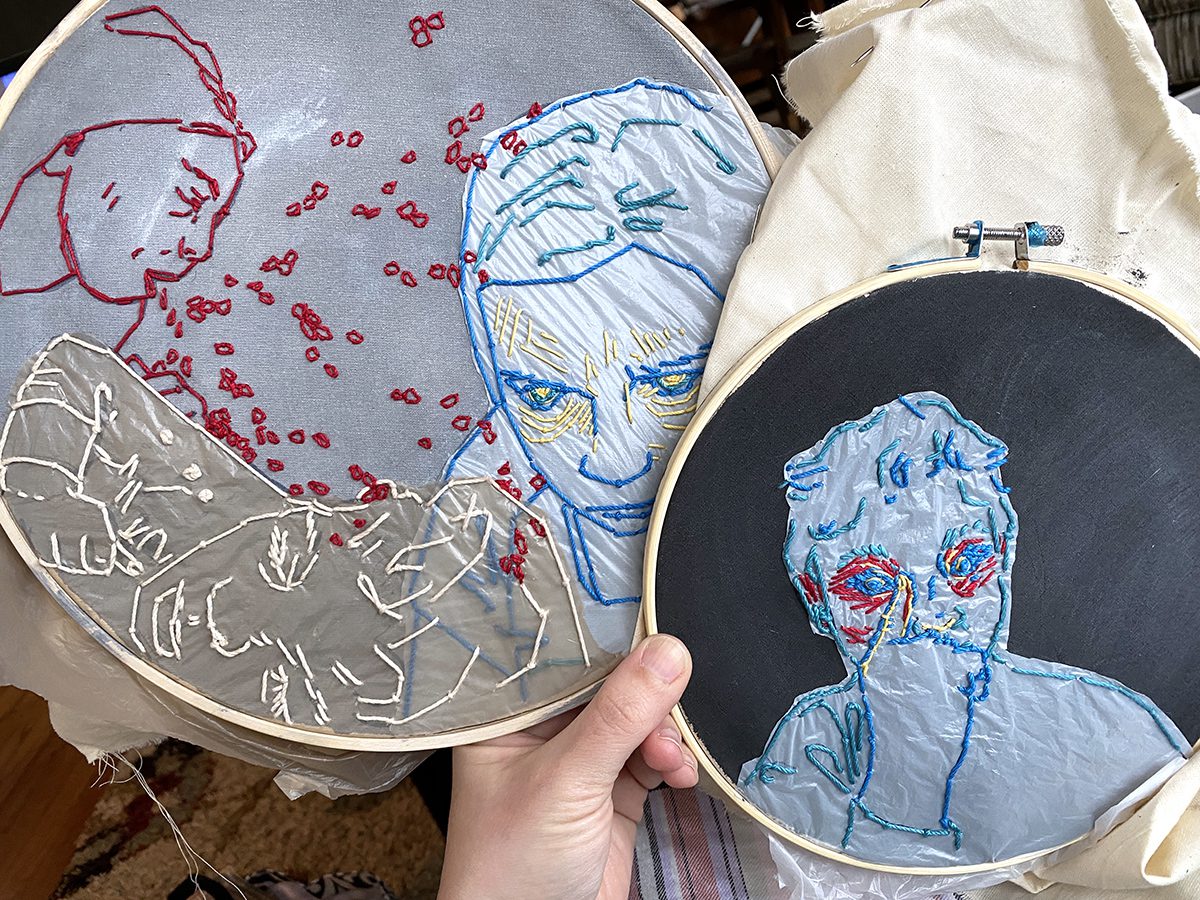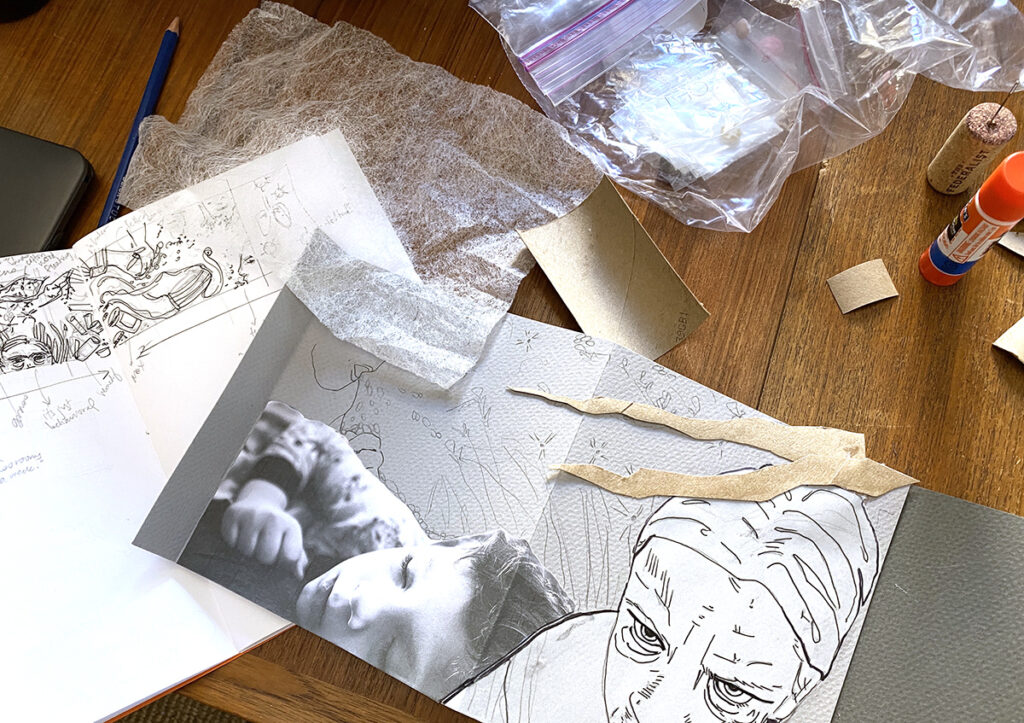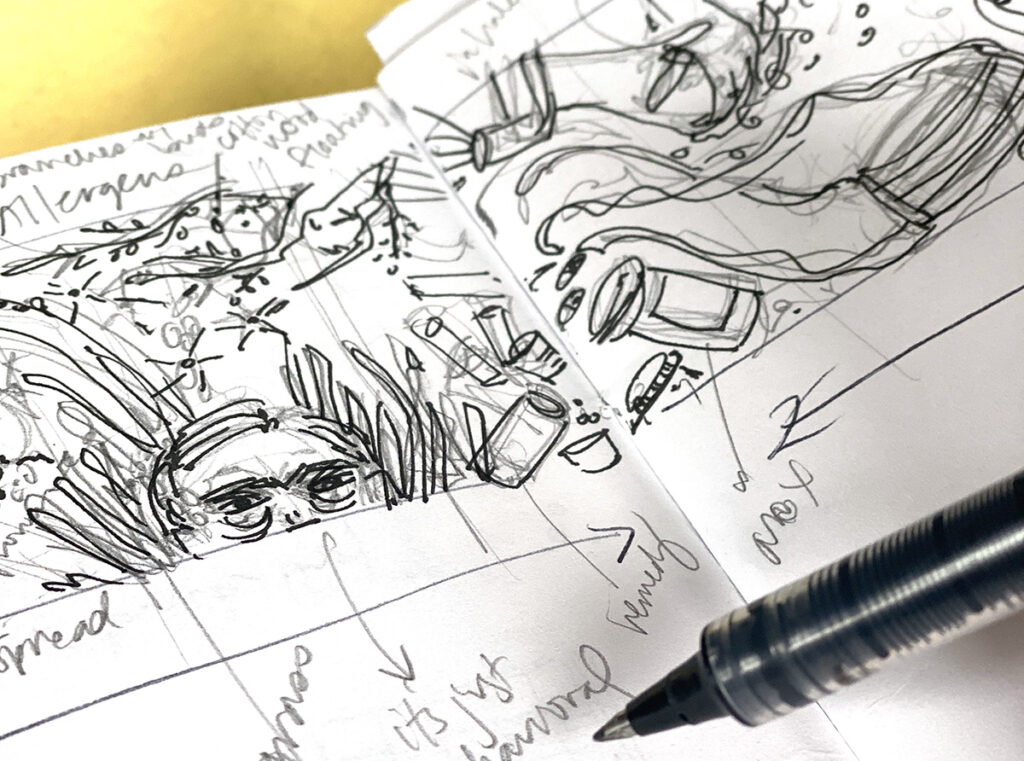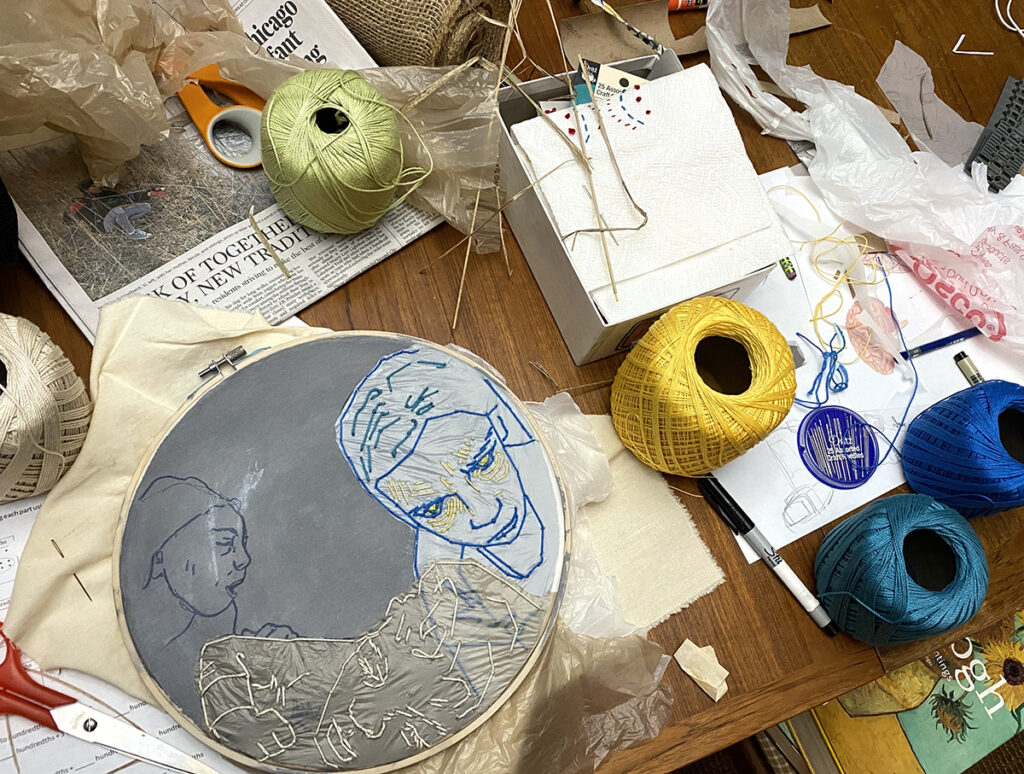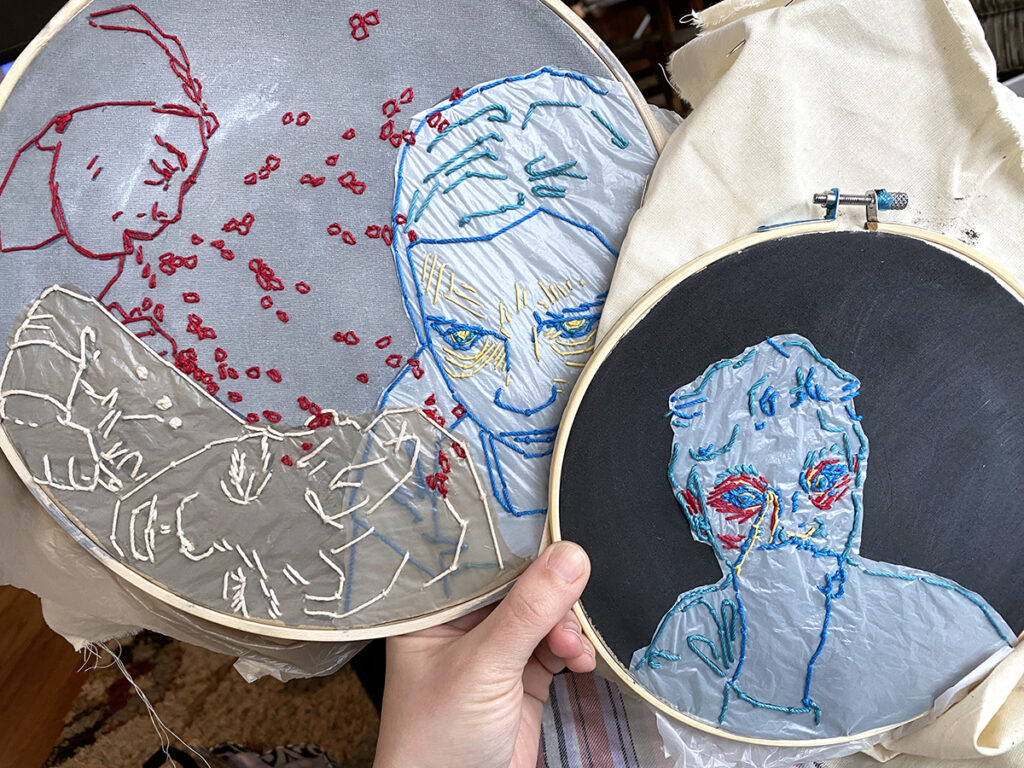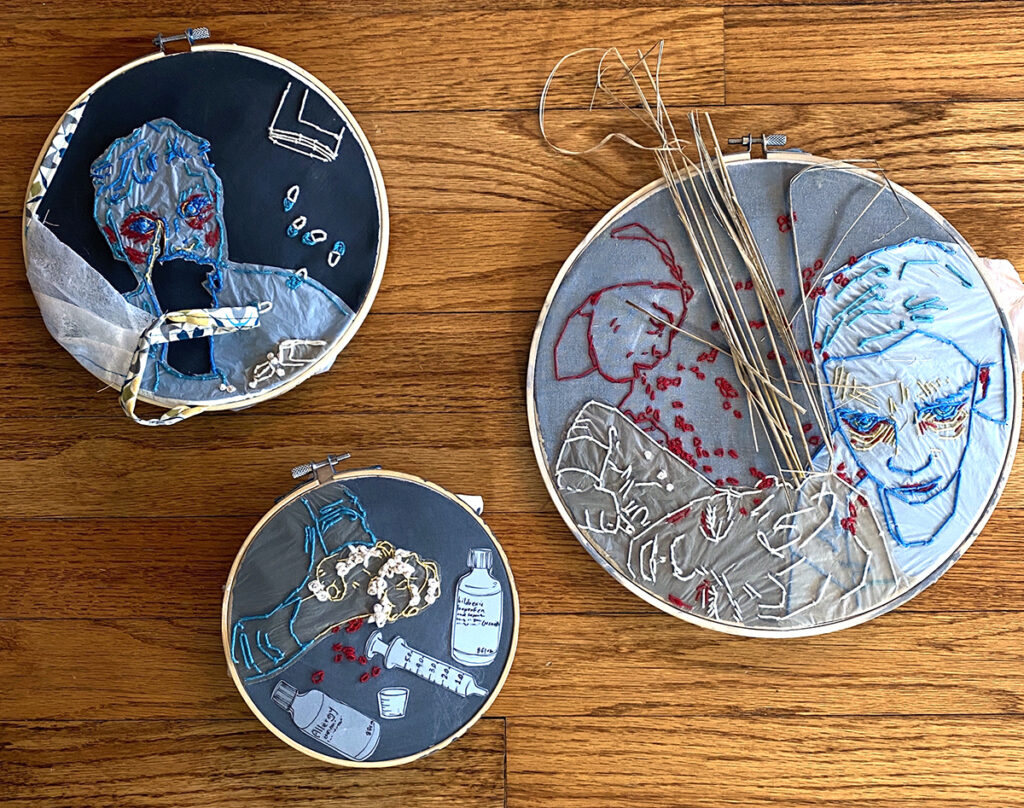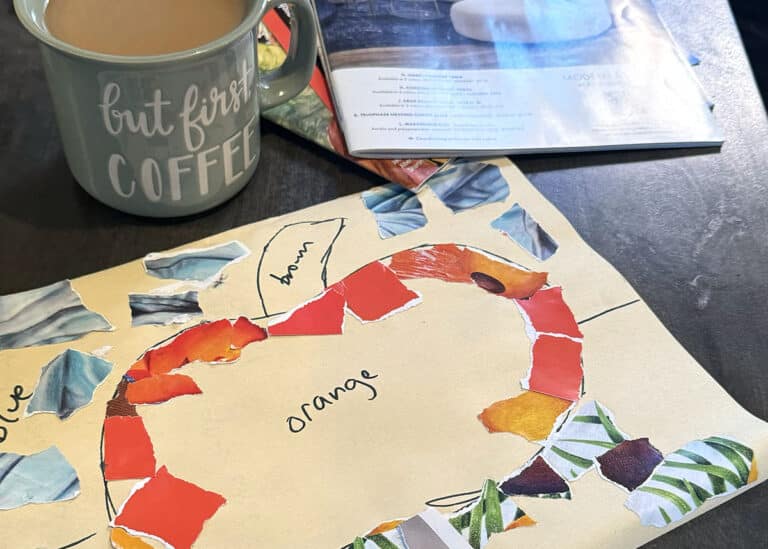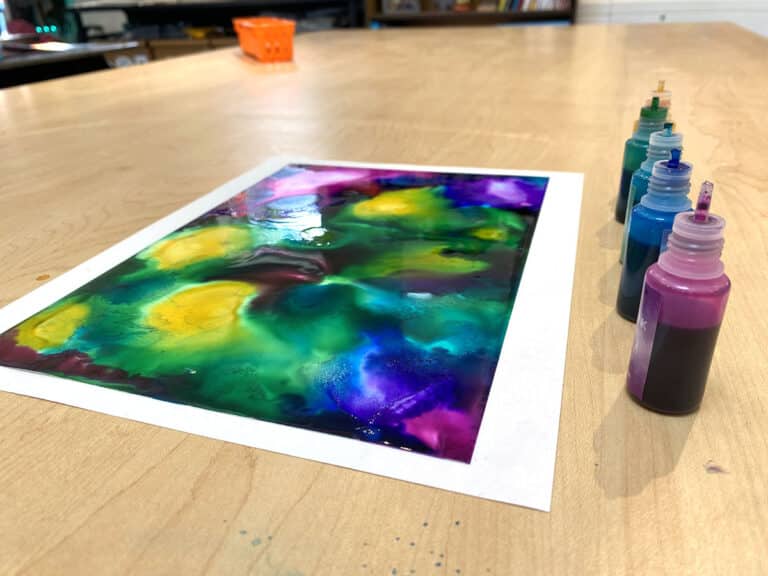The summer is a great time to dig into your artistic practice. It’s a time to let go of the intricacies of teaching art and simply create. Our own processes are personal and unique. The decisions we make are fluid and autonomous. We don’t sit down and dissect, identify, and label each part of our studio experience. However, assessment is still an important part of the process. While we don’t need to do this every time we make art, it is a helpful and reflective mindset.
What questions do you ask yourself?
You probably don’t realize how much you assess your own art as you work. Yet, we require our students to assess their work throughout the process, communicate those thoughts, and justify their choices. If we want to be successful when we teach the studio experience, it’s important first to observe and break down our own studio experience. If you are getting back into artmaking, consider our newest course, Rediscovering Your Artistic Identity. The curriculum will guide you in your process and give you strategies to bring into your studio classroom.
Remember, assessment isn’t only present in rubric form. Let’s take a look at 4 ways we can connect our studio practice with our students’ learning.
1. Ask yourself questions (all the time).
You are constantly self-assessing your work. For instance, you might think, “How will I make this happen?” or, “When will I have time to do this?” or, “Will this red look good here?” or even, “Why am I doing this?”
Questioning is an essential part of assessment. It doesn’t matter where you are in the artmaking process; questioning gives a lot of information. Model this in the classroom by bringing in one of your incomplete artworks. Speak your thoughts out loud and push through the awkwardness. Demonstrate how your thinking works as you problem-solve through your own questions.
Questions we can model for students:
- What materials do I want to use?
- What techniques do I need to practice?
- What is my next step?
- What is the purpose of this work?
- Which composition feels best?
- When should I stop? (Is it finished?)
- What could I do to make this better or more clear?
2. Ask for feedback (and know who to ask).
Whether you are asking your best friend or your cat, you are always looking for someone to give you feedback. We also know exactly who to turn to when we need a specific type of feedback.
- If you want someone to feed your ego, you ask your mom, who says, “Your work is so beautiful! I love it all! You’re so talented!”
- If you want to know how someone interprets your work, you might ask your partner. They might respond with, “Ummm, I see an angry face over here, and I think it’s about me not doing the dishes last night.”
- You also know that you will seek out your trusted colleagues and art connections if you need very specific artistic feedback. Those are your go-to people who can give you the critical feedback you need.
Provide opportunities for students to explore this in the classroom. Students identify targeted questions they have about their artwork. Challenge students to find one trusted peer as well as someone they don’t know as well. As they work through their questions, they will begin to identify their go-to people.
Most feedback will be specific to the artist and their work. Here are a few big-picture questions we ask in our own practice that students can ask in the classroom:
- What does my artwork mean to you?
- What do you think of when you look at this work?
- What is the first thing you see? What stands out to you?
3. Experiment, practice, and streamline your focus.
Our own practice incorporates an intricate balance of innate skills. Because we already have tools in our toolbox, we focus on how our work conveys our intended message. We aren’t as worried about our composition because it comes naturally.
But what happens when we aren’t so adept with our skills?
Consider what your artistic process looks like when you’re learning a new skill. For instance, what if you are learning how to do metalsmithing for the first time? Your focus becomes how to saw, file, and form the metal. You simplify your design as you shift your attention to craftsmanship. If you focus on a few skills with a new artistic process, we should also be selective in the classroom.
During your lessons or units, highlight a few skills and concepts essential for the goal or learning objective. Our students are learning and practicing a myriad of skills daily. From learning how to use a paintbrush to making composition and imagery decisions—it can be overwhelming. Students are learning and applying multiple skills in each artwork.
When it comes to assessment, focus on your top 3:
- One media-specific technique
- One main Element of Art or Principle of Design
- One critical thinking skill
- One area of refinement based on feedback
- One method to convey intent
- One aspect of craftsmanship
4. Concentrate on improvement.
We are our own worst critics. In your own practice, you focus on ways to grow and improve. This is authentic learning. The worst thing that can happen after completing an artwork is that it isn’t purchased or someone “doesn’t like it.”
In the classroom, students are graded for their outcomes. How do you foster the same authentic learning in the classroom that occurs in your personal studio? Focus on assessments that foster improvement and engage the feedback loop. Sometimes the outcome doesn’t quite match expectations. Students express how they feel about the finished product and how they might have done something differently. This reflection is clear evidence of learning and should be taken into consideration when assessing.
Types of assessments that support the creative process include:
- Growth portfolios
- In-progress critiques
- Mini-rubrics throughout the process
- Reflection
The Microcosm of Studio Practice
The classroom doesn’t always mirror real-life practice. Take a closer look at what you implicitly do as an artist throughout the creative process. We gain important insight that impacts how we teach and assess our students. The closer we can connect our students with a real-life artistic process, the more authentic their learning will be.
For more assessment tips and strategies, register for the NOW Conference and sign up for the 7 Tips for Easier Assessment session.
What questions do you ask yourself as you are creating?
How can you keep classroom assessments in mind as you create art this summer?
How do you see the way you work as an artist mirrored in your approach to teaching?
Magazine articles and podcasts are opinions of professional education contributors and do not necessarily represent the position of the Art of Education University (AOEU) or its academic offerings. Contributors use terms in the way they are most often talked about in the scope of their educational experiences.
